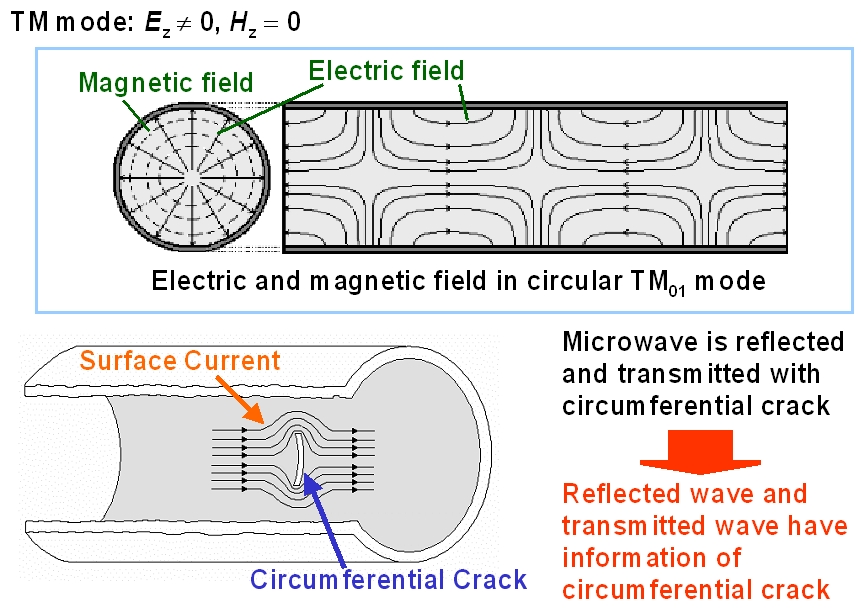Microwave nondestructive testing
Page 1 : Microwave NDT
Page 2 : Experimental set-up
Background of this research
Detection of defect in complex piping systems in early stage of degradation
with a high-speed and high-accuracy inspection method is serious concerns in the
operation of nuclear power plants.
The typical methods for detecting defects such as eddy current testing (ECT) and
ultrasonic testing (UT) are time/cost consuming because they need point-by-point
inspection for the long pipes.
Therefore it is desirable to develop another high-speed technique for crack detection.
One of the most promising techniques which might reduce the time/cost of the long range
inspection is the nondestructive testing (NDT) method using microwave.
We are investigating the microwave NDT to achieve high-speed inspection.
Microwave NDT
Microwave can be propagated through pipes rapidly.
We can use TE-modes for detection of defect having longitudinal component,
a longitudinal crack for example.
The TE-modes are characterized by fields with Ez = 0 and
Hz ≠ 0, where z indicates
the direction of the axial direction.
When microwave wave of TE-modes is propagated in the pipe, the electric surface current
with a circumferential component is produced in the inner surface of the pipe.
Once this surface current flows in the pipe with a longitudinal crack, the crack prevents
the surface current from flowing.
Consequently some parts of the incident wave are reflected, which have information about
the crack.
We can also use TM-modes for detection of defect having circumferential component,
a circumferential crack for example.
The TM-modes are characterized by fields with Ez ≠ 0 and
Hz = 0.
When microwave wave of TM-modes is propagated in the pipe, the electric surface current
with a axial component is produced in the inner surface of the pipe.
Then we can obtain information about a circumferential crack.
 |
| TE mode |
 |
| TM mode |
hashizume-stafflovehashizume@grp.tohoku.ac.jp
Copyright © Hashizume & Ito & Ebara & Cheng Lab., All Rights Reserved.